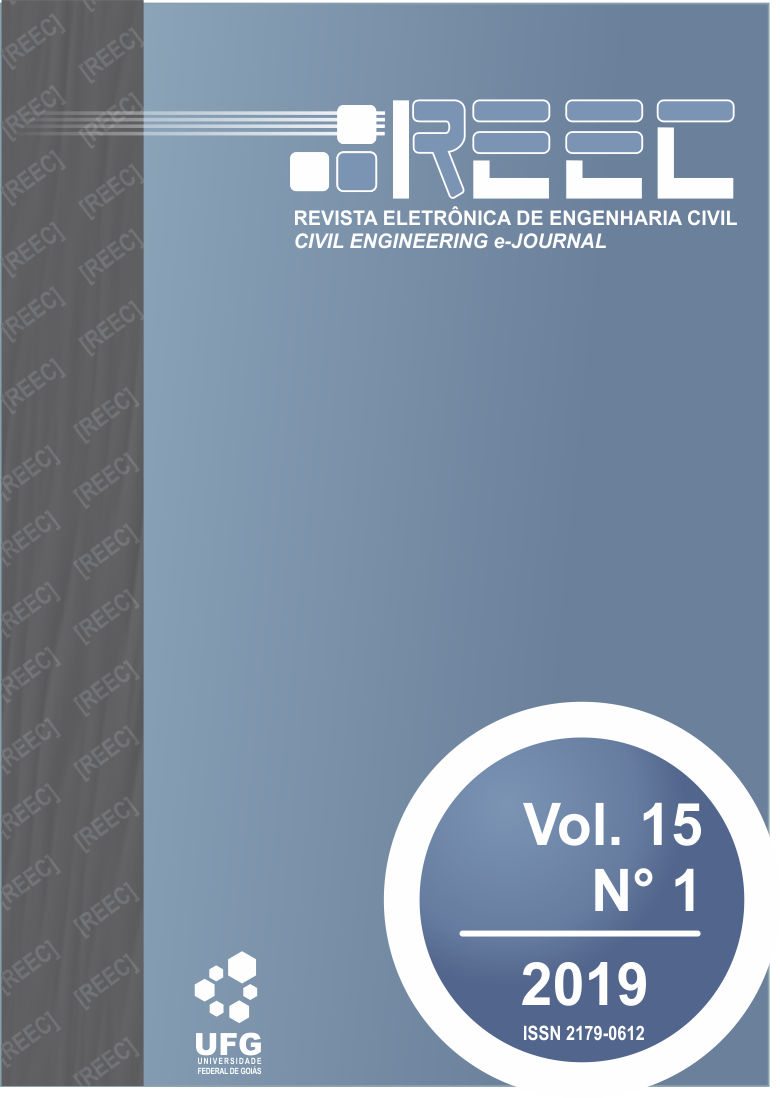A IMPORTÂNCIA DA FORMA ESTRUTURAL: OBRAS DE MAILLART E MENN [ The importance of structural forms: Maillart and Menn`s works ]
DOI:
https://doi.org/10.5216/reec.v15i1.51419Resumo
RESUMO: As estruturas fornecem a chave para o renascimento da vida pública. Essa nova visão levou à criação de uma nova classe de profissionais, os engenheiros modernos. Entre eles, destacam-se Robert Maillart e Christian Menn, que produziram obras de arte em concreto armado entre os finais do século XIX e XX. Sabendo que a primeira fase de produção de Menn foi influenciada pela arte e técnica de Maillart, este artigo busca avaliar as semelhanças nas relações forma-função e estética das obras de maior representatividade dos dois artistas estruturais por meio da aplicação de análises computacionais dos aspectos projetuais. A ponte Salginatobel, obra de Maillart, foi construída em 1930 e desde então tem sido reconhecida por sua impressionante nova forma de arte e pela sua eficiência econômica e estrutural. A ponte Ganter, obra de Menn, possui qualidade estética sem violar as considerações técnicas, tendo o maior vão livre das pontes da Suíça. Por meio de análises computacionais simplificadas as duas pontes foram estudadas e notou-se que Menn usa a técnica de caixão perdido criada por Maillart para vencer grandes vãos, entretanto os momentos fletores atingiram valores elevados, exigindo que o artista usasse do sistema de protensão para executar sua obra. Observou-se semelhança na estética entre as obras analisadas e no comportamento dos esforços internos, atestando que Menn, ao projetar sua obra, espelhou-se nas formas estruturais criadas por Maillart.
ABSTRACT: Structures provide the key to revive the public life. This new vision led to the creation of a new class of professionals, the modern engineers. Among them, Robert Maillart and Christian Menn stand out because both produced reinforced concrete works of art between the late nineteenth and twentieth centuries. Considering that the first Menn’s production phase was influenced by Maillart’s art and technique, this paper aims to evaluate the similarities in the form-function and aesthetic relations between the most representative works of these two structural artists through the application of computational analysis of design aspects. The Salginatobel Bridge, Maillart’s work, was built in 1930 and has been recognized for its impressive new art form and its economic and structural efficiency since then. The Ganter Bridge, Menn`s work, has aesthetic quality without violating technical considerations and with the largest span of Switzerland bridges. By means of simplified computational analysis the two bridges were studied and it was noticed that Menn uses Maillart`s hollow-box technique to overcome large spans, however the bending moments reached high values, requiring the usage of a pretension system. Similarities were observed in the aesthetics between the analyzed bridges and in the behavior of the internal efforts, attesting that Menn`s work was mirrored in Maillart`s structural forms.
Downloads
Downloads
Publicado
Como Citar
Edição
Seção
Licença
Autores que publicam nesta revista concordam com os seguintes termos: Autores mantém os direitos autorais e concedem à revista o direito de primeira publicação, com o trabalho simultaneamente licenciado sob a Licença Creative Commons Attribution que permite o compartilhamento do trabalho com reconhecimento da autoria e publicação inicial nesta revista.
![[REEC] Revista Eletrônica de Engenharia Civil](https://revistas.ufg.br/public/journals/30/pageHeaderLogoImage_pt_BR.png)



